Episodes

Thursday Jul 22, 2021
Austroads Project Pipeline 2021-22
Thursday Jul 22, 2021
Thursday Jul 22, 2021
This webinar provides an overview of Austroads’ projects 2021-22 and what is required to work with Austroads.
The session is beneficial to consultants who may be interested in tendering for Austroads projects.
The projects discussed focus on data collection and management, digital engineering, tunnel design and componentry, bridge assessment, pavement technology, road design, road safety audits, driver licensing, environment reporting, and vehicle and infrastructure connectivity.
The webinar is presented by Paul Davies, Austroads Acting General Manager Operations, and program managers:
- Ross Guppy, Program Manager Transport Infrastructure
- Michael Nieuwesteeg, Program Manager Road Safety and Design
- Richard Delplace, Program Manager Transport Network Operations
- Vibeke Matthews, Acting Program Manager Future Vehicles and Technology, and Environment and Sustainability Program.

Thursday Jun 24, 2021
Strategy for an Improved Mechanistic-empirical Flexible Pavement Treatment Design
Thursday Jun 24, 2021
Thursday Jun 24, 2021
Following the update of the Austroads Guide to Pavement Technology Part 5: Pavement Evaluation and Treatment Design in 2019, Austroads commissioned the development of a strategy for future improvement of the mechanistic-empirical procedure (MEP) used in pavement rehabilitation and strengthening treatment design.
This webinar, presented by Dr Didier Bodin and Dr Geoff Jameson, outlines future research direction derived from the review of national and international literature and road agency best practice. Priority areas were identified through engagement with pavement designers across road agencies and industry. The main topics presented include:
- Methods to characterise past and future fatigue damage of existing bound pavement layers.
- Design method to quantify the extent of reflective cracking in treatment layers.
- Enhanced use of traffic speed deflectometer data.
The roadmap for short, medium and long-term strategy will inform future research program towards providing pavement designers with improved pavement rehabilitation design procedures in the near future.
The webinar also discusses practical aspects of the pavement and subgrade layers moduli back-calculation from measured surface deflections.

Tuesday Jun 22, 2021
Next Generation Asset Data Collection: Road Pavement Performance
Tuesday Jun 22, 2021
Tuesday Jun 22, 2021
The increasing pace of change of technology brings considerable promise of more data, of a higher quality, captured for a lower cost. This has the potential to improve the asset management of roads by enabling better decision making and providing a more complete picture of asset performance.
These benefits, however, are not automatic. For asset managers, it can be difficult to know what technology is available and how the benefits compare to costs. There is also often considerable friction in moving to new approaches as existing processes and systems are tailored for the status quo. Perhaps the biggest hurdle is confidence in moving from an existing approach to having trust in the unknown.
In response to this need to understand the emerging technologies available, the cost-effectiveness of these technologies, and the implications of transitioning from existing to new approaches, Austroads has developed a research report on next generation data collection technologies for road pavement assets.
With specific reference to road pavement assets, this webinar takes attendees through:
- The key themes across the data required to inform asset management decisions.
- The current state of data collection technologies.
- The interconnected ecosystem of emerging data collection technologies.
- A structured framework for evaluating the cost-effectiveness of emerging data collection technologies.
- Insights from the application of the evaluation framework and implications for future approaches to data collection.
Presented by David Jansen, Susan Chamberlain, Ella Hingston, Dr Colin Kemp and Trevor Chiang.
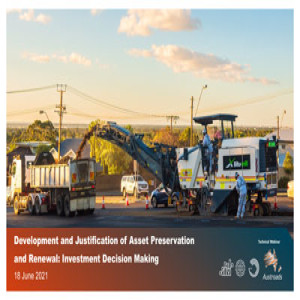
Friday Jun 18, 2021
Friday Jun 18, 2021
This is a final session in the series of three webinars based on the Austroads report Prolonging the Life of Road Assets Under Increasing Demand: A Framework and Tools for Informing the Development and Justification of Asset Preservation and Renewal.
It is presented by Tim Martin, Tyrone Toole and Qindong Li, and explains the broad framework and the economic and customer centred basis for justifying appropriate levels of investment in road asset preservation and renewal. Examples include those which impact strategic, network level decisions and supporting policies and processes.
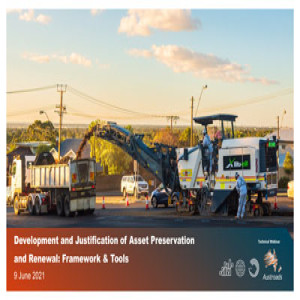
Wednesday Jun 09, 2021
Development and Justification of Asset Preservation and Renewal: Framework and Tools
Wednesday Jun 09, 2021
Wednesday Jun 09, 2021
This is the second session in a series to present the findings of Prolonging the Life of Road Assets Under Increasing Demand: A Framework and Tools for Informing the Development and Justification of Asset Preservation and Renewal.
The webinar, presented by Tyrone Toole, Dr Tim Martin, Ranita Sen, Qindong Li and Liam Terris, explains the framework, tools and case studies in detail, and how asset management practitioners can apply these in their day-to-day work.
The emphasis is on reinforcing good practice and its justification and how different preservation and renewal options can be evaluated.
It also provides a detailed introduction into the Pavement Life-cycle Costing tool, followed by worked examples through the presentation of several case studies.
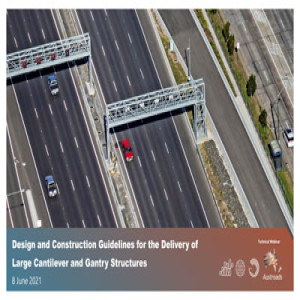
Tuesday Jun 08, 2021
Tuesday Jun 08, 2021
Over recent years there have been a number of incidents of structural failures of sign and high mast lighting structures across Australia and New Zealand, primarily due to poor design and construction practices. In addition to the obvious unacceptable safety risks and property damage caused by such incidents, these failures create substantial unforeseen operational costs to repair and modify these assets. This often results in significant traffic delays and imparts reputational damage to the governing road authority and other parties involved.
The Austroads report Design and Construction Guidelines for the Delivery of Large Cantilever and Gantry Structures documents consistent advice for the design and construction of large cantilever and gantry structures that is aligned with national and international best practice.
This webinar, presented by Claire Jager, Linda Ziebell and Andrew Wong, covers the following key topics:
- gaps in current guidance and standards
- examples of good practice
- lessons learned from past failures.
The guidance document should be read alongside relevant standards and is intended for use by all stakeholders including:
- state road agencies
- local government agencies
- designers, contractors and fabricators.
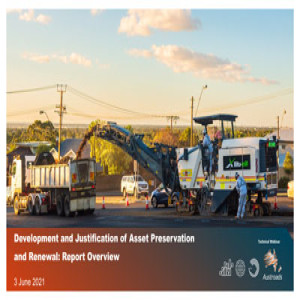
Thursday Jun 03, 2021
Development and Justification of Asset Preservation and Renewal: Report Overview
Thursday Jun 03, 2021
Thursday Jun 03, 2021
This is the first session in a series of three webinars to present the findings of the report Prolonging the Life of Road Assets Under Increasing Demand: A Framework and Tools for Informing the Development and Justification of Asset Preservation and Renewal.
The session covers:
- Review of challenges, guiding principles, examples of practice and definition of requirements.
- Development of framework, procedures and supporting tools.
- Scope and design of the case studies.
- Case study results and consolidated findings.
Presented by Qindong Li, Tim Martin, Ranita Sen and Tyrone Toole.

Thursday May 27, 2021
Options for Managing the Impacts of Aged Heavy Vehicles
Thursday May 27, 2021
Thursday May 27, 2021
The freight industry is critical to the economy, and for many sectors it is heavy vehicles that underpin freight movements and prosperity.
The average age of trucks in Australia and New Zealand is among the highest in the developed world. The oldest trucks are associated with higher environmental and health costs than newer trucks, yet these have been poorly quantified to date. Managing these issues is important to maintaining the freight industry’s social license.
Austroads has published a research report which analyses the impacts of an ageing heavy vehicle fleet and explores measures that have been used to manage this challenge in Australasia and internationally.

Tuesday May 25, 2021
An Overview of the New Guide to Road Design Parts 1 and 7
Tuesday May 25, 2021
Tuesday May 25, 2021
Austroads has recently completed a project to consolidate the previous Guide to Road Design Part 1: Introduction to Road Design, Part 2: Design Considerations and Part 8: Process and Documentation into a new Part 1: Objectives of Road Design.
This update to Part 1 of the Guide to Road Design provides practitioners with a detailed description of the critical aspects of road design and essentially combines the former parts 1, 2 and 8 into one single part. This will enable Part 2 to be utilised for network design considerations in a future update and the removal of Part 8 of the Guide.
In addition, a new Part 7: New and Emerging Treatments has been created to provide information to practitioners using emerging treatments which are known to provide some benefit from a safety and/or operational perspective but have not yet produced evidence for predominant contexts.
Part 7 contains design-related knowledge, findings from research and practical experiences about new, emerging and innovative treatments. This is a holding place for information about these treatments where full guidance is not available, for all road environments or until learning from implementation/trials is captured. The intention is for this information to be migrated to the respective parts 1 to 6 of the Guide when comprehensive evidence and dimensional guidance is available.
This webinar, presented by Noel O’Callaghan and Malcolm Mak, provides an overview of the new parts 1 and 7 and explain the links to other Austroads guides as well as jurisdictional supplements.
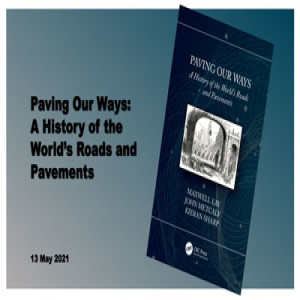
Thursday May 13, 2021
Paving our ways
Thursday May 13, 2021
Thursday May 13, 2021
This webinar presents a book “Paving Our Ways”, which references Austroads’ research and provides a comprehensive international history of the world’s pavements, running from the earliest human settlements to the present day. No previous book has covered such a broad canvass.
The book is written for general and technically oriented readers, tracing the human and social aspects of pavement development and use and providing detailed technical background. It also caters to students of engineering and transport wishing to broaden their knowledge of their profession or taking a course in the history and sociology of engineering.
“Paving Our Ways” provides interesting and curious asides about the stranger aspects of pavements. It explores the controversies surrounding the development of macadam pavements and, later, of asphalt pavements in a way that provides many insights into modern pavements. It also examines the subsequent competition between pavements using bituminous or cementitious binders.
The book covers three major time zones. The first is from the times of the Egyptian pharaohs to the end of the Roman era, the second is from the Middle Ages to the beginning of the First World War during which people like Tresaguet, Telford and McAdam had major impacts, and the third is from the end of the First World War to the present time when motorised trucks and machinery dramatically changed the way the pavements were made and used.
Looking back on the way current pavement technologies evolved, the authors of the book Maxwell Lay, formerly Director ConnectEast and Australian Road Research Board, John Metcalf, Formerly Louisiana State University, USA and Kieran Sharp, Road Eng. Assoc. of Asia and Australasia show how Australian practice relates to international practice.

